|
Monastic churches in Dorset and Hampshire |
|
Romsey Abbey
|
|

Romsey Abbey
was founded in the year 907, possibly on the site of an earlier church,
by the Saxon
king Edward the Elder as a nunnery. His daughter, Princess Aelflaed,
became the first abbess. In the later part of the 10th
century it adopted the Benedictine rule.
In 997 the abbey was
destroyed by the Viking, Sweyn Forkbeard. The nuns had already fled to
the Nunnaminster, the great nunnery at Winchester; legend has it that
they had received a divine message warning them of what was about to
happen.
The
abbey lay deserted until 1020 when it was refounded in the reign of King
Canute, and rebuilt in stone. It was rebuilt in Norman style between
1130-1140, though some Saxon features remain.
It
continued as a nunnery for over 500 years. It was dissolved in 1539.
At this time the
building could have been lost. However, one part of the abbey church had
served the function of a parish church for the town of Romsey, and so
the town decided to buy the entire church. The price was £100.
Architecturally, the church is endlessly fascinating. The impressive
nave his three levels, arcade, triforium and clerestory: the triforium
changes subtly as you move along the nave.
|
|
 |
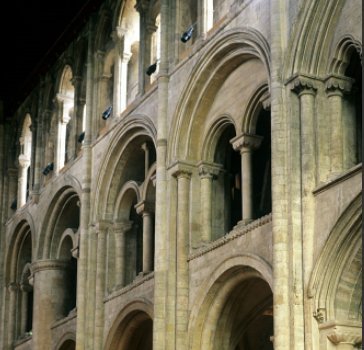 |
|
|
|
|
A unique feature is the extraordinary survival of two Anglo-Saxon roods. Both are
Christus
Triumphans images. The earliest, with a tenth
century date, is in a chapel inside the building. Christ is nailed to a
cross that is turning into the tree of life. On the left, Longinus
pierces Christ with his spear: on the right, Stephaton offers Christ
vinegar on a sponge. Angels seated on the cross offer Christ comfort.
Originally, the eyes of the figures would have been jewels.
Now outside, but
possibly inside in Anglo-Saxon times, is another rood, dating from c
1015. Above, the hand of God is emerging from the clouds.
|
 |
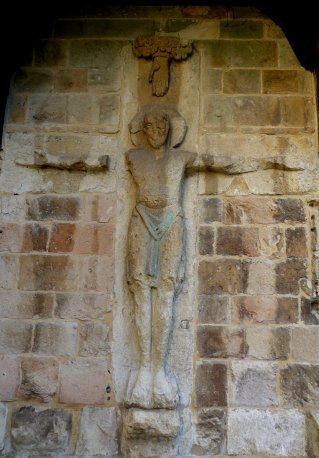 |
|
Another remarkable
survival is the early sixteenth century reredos, now in the chapel of St
Laurence. Post reformation, it was painted over with the ten
commandments, and then lost - it was rediscovered in 1813.
The lower part of the reredos shows a resurection scene: at the top are
a varied selction of saints. My reading (with a little help) from left to
right is: St Jerome, St Francis, St Sebastian, a bishop (possibly St
Swithun) St Scholastica, St Benedict, St Roche, one I'm not sure of, and another bishop.

|
|
Less obvious, but
more extraordinary than anything yet, is the collection of Norman
capitals. Some have a religious theme, though it is not always easy to
work out exactly what they are showing. However, most have secular
images, including battle scenes, and scenes of everyday life such
harvesting. On the left below is a battle scene, but what does the
capital on the right show? My guess is the Magi, but I may well be quite
wrong!
|
 |
 |
|
|
| Some more images
to whet your appetite for a visit to Romsey. The panel painting was found
with the reredos, though it is much older. |
|
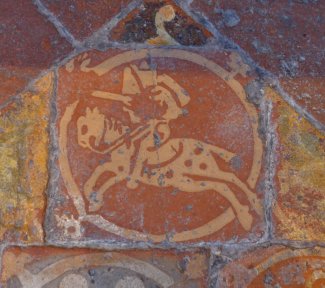
|
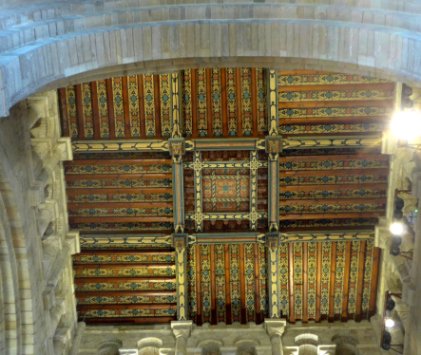
|
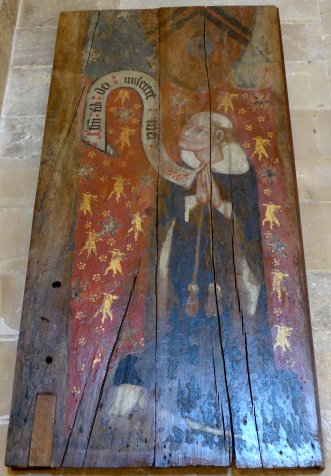 |
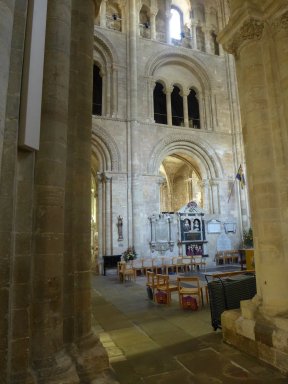 |
| |
|
|
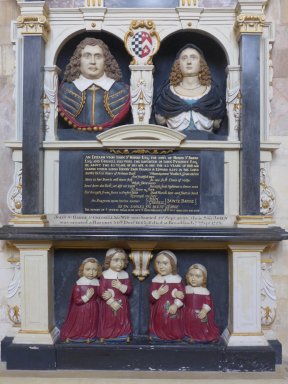
|
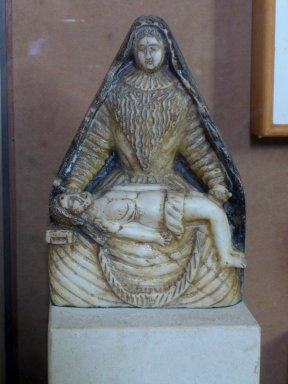 |
|
On to Christchurch Priory, Dorset
|
|
Art in context index
home page - explore the site |













